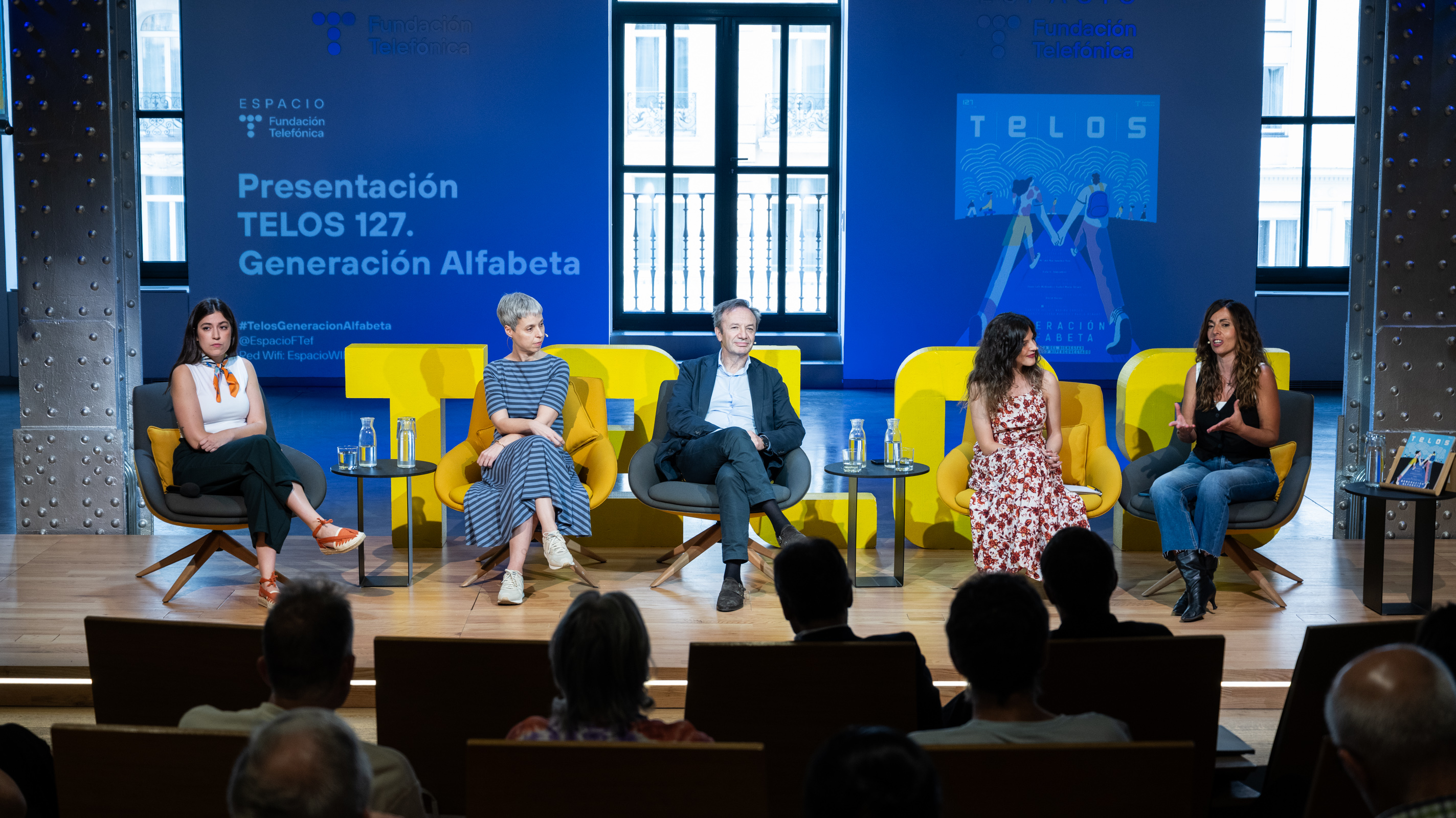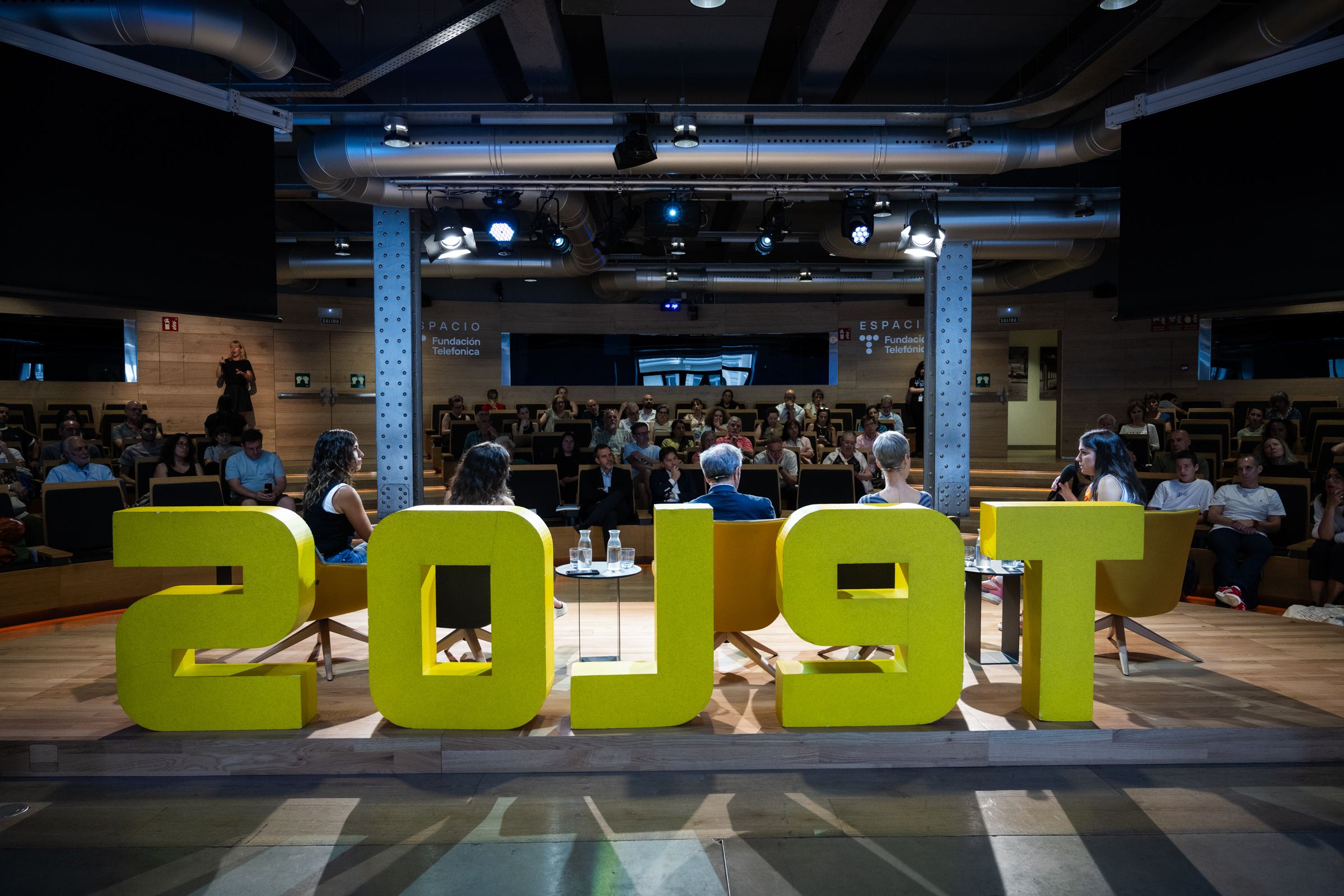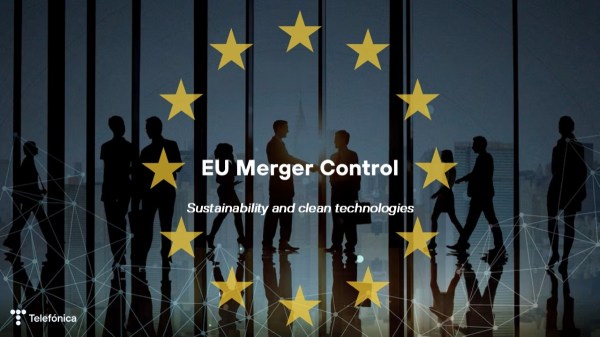On Tuesday 10 June 2025, the presentation of the new magazine TELOS took place at Fundación Telefónica. Under the title “ Alfabeta Generation. In search of well-being in a hyperconnected world“, this new edition analyses from a transdisciplinary approach the challenges faced by children and teenagers in a world where the line between the digital and the physical is increasingly thinner.
The magazine features the participation of more than twenty experts in the various aspects surrounding the protection of new generations in the digital space, such as mental health, critical technological literacy, data protection and responsible use, among others.
Luis Prendes, General Director of Fundación Telefónica, opened the event presenting the magazine and sharing his vision of the new moment in which the alpha and beta generations find themselves. Afterwards, Pablo Gonzalo Gómez, head of the Digital Culture Area of Espacio Fundación Telefónica and member of the editorial board of TELOS, highlighted the work of Fundación Telefónica to offer this knowledge tool to society to help them navigate new paradigms from the hand of experts. Gonzalo Gómez then introduced the panel of the event, consisting of: Juan Luis Redondo Maíllo, from the Public Policy Area at Telefónica; Marta Beltrán, from the Spanish Data Protection Agency; Patricia Ruiz Guevara, from Fundación Maldita.es; Lola S. Almendros, PhD in Logic and Philosophy of Science; and Elena Sanz, from The Conversation España, as moderator of the meeting.
A world tailored to the alpha and beta generations
The panel discussion began with a presentation by Lola S. Almendros, who offered a conceptual framework to facilitate understanding of the new paradigm of the Alfabeta generation. Almendros explained that this generation has experienced the ‘symbiosis or hybridisation’ of the physical and digital worlds, resulting in a ‘new way of life with a new set of values and practices’.
However, as Juan Luis Redondo later clarified, the hybridisation of these younger generations does not imply that their knowledge of the digital world or their awareness of the associated risks is fully developed. Children and young people were perceived by society asdigital natives, distinguished from other generations by their intuitive use of digital technologies and applications. However, over time, it has become clear that intuitive use does not equate to critical and responsible use.
Redondo highlighted the fact that, at the dawn of the digital age, there was no certainty as to how widespread access to digital devices and services from an early age would impact younger generations. Now, at a time when young people are active actors in the digital environment, the risks are more visible. The variety of risks requires identification, categorisation and analysis to facilitate the search for and implementation of effective solutions. In this regard, he presented the risk classification set out in Telefónica’s public position paper ‘Building a safe digital environment for minors’ published earlier this year. This risk approach is divided into five categories: (1) minors access to inappropriate, harmful or offensive content; (2) vulnerability of minors to online interactions; (3) impact of social media; (4) online distribution of minors´ sexual content; and (5) non-responsible use of digital devices in classrooms.
For her part, Marta Beltrán presented the risk division proposed by the OECD in 2011 and revised in 2021, which revolves around the ‘5 Cs’: Content, Conduct, Contact, Consumption and Cross-cutting. Beltrán explained that ‘these risks are not inherent in technology’, but depend on its use and design. In her opinion, it is necessary to promote responsible use as a mitigation strategy and responsible design as a prevention strategy.
Redondo supported the need to address challenges through responsible use and design, with Telefónica’s Decalogue of principles for the protection of minors being its contribution to guiding the actions of the public and private sectors, academic institutions and society in creating a safe digital world for minors.
We have been focusing on responsible use issues for a long time. […] The big change now is to think that, beyond use, we need responsible design
To make this protection approach effective, Patricia Ruiz Guevara pointed the need to ’educate the rest of the generations’. It is not only children who are unaware of the risks they are exposed to; families are also unaware of the spaces and information that children access. ‘It is easier to protect them in a limited physical space than in the infinity of the internet.’
Ruiz Guevara gave the example of disinformation. The internet and digital devices offer us the possibility of accessing a wealth of information from the palm of our hands. However, this same fact has turned against us, as we also have access to a wealth of hoaxes. ‘Misinformation has always existed, but now it is more accessible due to the viral nature of social media’, which is the source that young people use most to inform themselves. If families and teachers are unaware of this reality, it is difficult to tackle it.
The panel discussion concluded with a positive outlook for the future from the speakers, with hopes pinned on the younger generations and current mitigation measures to reconfigure the way young people participate in the digital environment.












